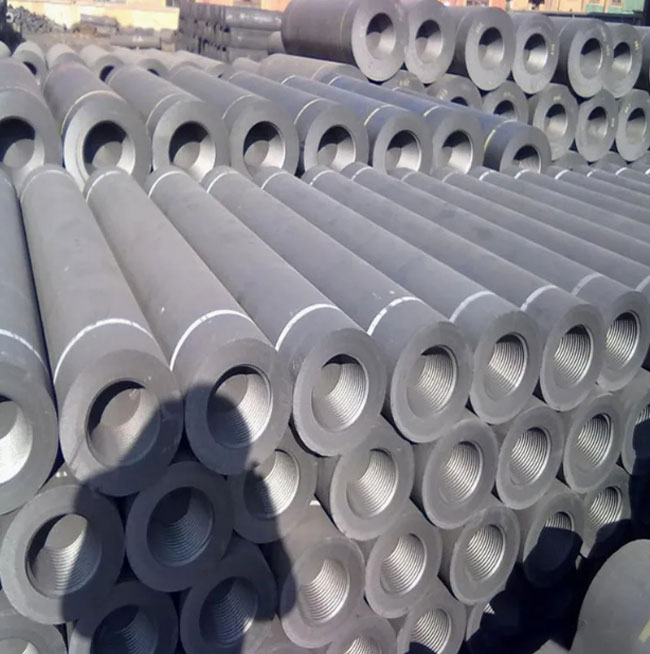
The graphite wire is used as an electrode to conduct high current and low voltage, melting steels or non-ferrous alloys in electric arches. It is an important material in the electric furnace for melting or smelting steel and iron. The electrode is also used as a carbon source in metallurgical processes, such as carbonation of coke.
The process of manufacturing graphite electrodes involves several steps, such as mixing and kneading, molding and extrusion, baking, isostatic pressing, and finishing. It is essential that the graphite electrodes are fabricated according to an ideal specification and application. The electrodes must be free of impurities or defects that may cause mechanical or electrical failure. Additionally, the electrodes need to be able withstand the harsh conditions in an electric furnace.
During the production process, the mixture is mixed with a machine or by hand until it becomes malleable. It is then molded according to the requirements and uses. Extrusion is the most common process, where the material is forced through a die, creating long cylindrical rods that are then cut to the desired length. This method is also effective in producing electrodes with a consistent and uniform density.

After the electrodes have been molded, a high temperature furnace is used to heat them. This process removes volatile compounds, and helps purify the material. The graphite will also have a shiny, smooth surface.
The graphite must be tested after it is produced to make sure it meets all the specifications and uses. This testing may include visual inspections, dimensional measurements, and other laboratory tests. Some manufacturers will also test the graphite with ultrasounds. This technology is useful for detecting cracks or fractures that cannot be detected by visual inspection.
The graphite electrode surface is hydrophobic by adding a chemical compound. This increases water flow while reducing the cooling time of the electrode. This increases the lifespan of the electrode as well as its performance.
Another improvement in graphite electrodes is to add a polymer coating to the electrode's surface. This can improve both the antifouling property and detection limit of the electrode. Melamine-based compounds have shown to provide significant improvements over graphite electrodes.
Before the final product is delivered to customers, all graphite electrodes must be thoroughly tested. Typical tests include measuring the true density of the electrodes and verifying the threading of the ends. Graphite electrodes that meet these criteria will perform well in electric arc kilns. They are safe to use for industrial applications of all kinds. Lastly, the graphite electrodes must be packaged safely to ensure that they are protected from damage during shipping and storage.

Write a Message